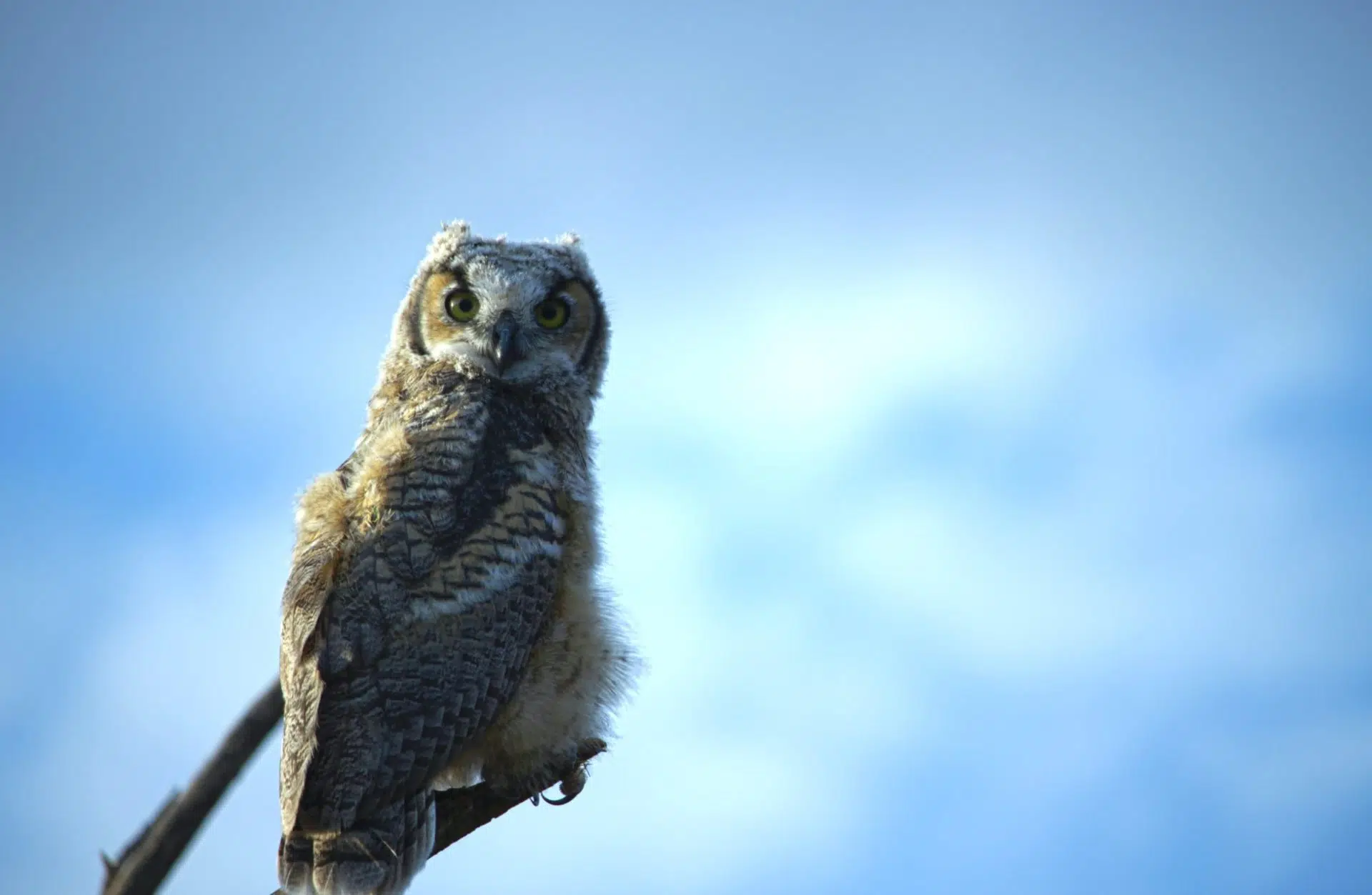Birds
Great Horned Owl
Bubo virginianus

Voice: hoo- hoohoohoo—-hoo-hoo. Females produce higher pitched hoots.
Great Horned Owls are the largest and most powerful of the common owls in Northeastern Ohio. They are found year round in undisturbed streams filled woodlands with large trees for nesting and nearby open areas for hunting. They have also adapted to living in residential areas, where they maybe seen hunting from chimneys or large trees. Their preferred habitat is rural areas with open fields interspersed with agricultural fields.
Great Horned Owls like other owls have eyes that are fixed in their socket. They cannot move their eyes up and down or side to side like humans. To compensate for lack of eye movement they can rotate their heads 270 degrees. This rotation enables the owl to see in many different directions. In addition to having an extra vertebrate to help with the neck movement, Great Horned Owls have large yellow eyes which allow them to gather sufficient light to see well in low light conditions. They have incredible senses of hearing, a trait that allows them to hunt at night. Their ears are located on the sides of the head. One opening of the ears is tilted upwards while the other is tilted downwards. The right ear is set higher up on the skull. This allows the owl to pinpoint exactly where the prey is located.
Great Horned Owls are thought to be the nocturnal equivalent to Red-tailed Hawks, doing most of their hunting at night. Like Red-tailed Hawks, Great Horned Owls hunt by waiting on a high perch, listening and looking then swooping down on its prey. Anything that moves is unsafe from this owl. It will eat small prey such as insects or larger prey such as cats, woodchucks, and geese. This owl’s varied diet may include mammals, birds, and reptiles to fish and amphibians. It will eat carrion when the weather conditions are bad. Unlike the Red-tailed Hawks, Great Horned Owls are one of the few birds that can identify it prey by smell, and have a particular fondness for skunks.
Great Horned Owls are the earliest nesters. They inhabit abandon hawk, eagle, heron and squirrel nests. In autumn Great Horned Owls determine their nesting territory by hooting in duet with their mate. A pair will roost together with the male later roosting just nearby until the young owlets fledge. Mating season of Great Horned Owls occurs January- April, and is dependant not on air temperature but on the availably of food. It is believed that Great Horned Owls mates for life or are monogamous. In the wild that could mean a pair could stay together for 15-20 years.
In late January, the 2-3 young hatch in late February and early March. By April the young are mobile climbing up and down tree branches but are incapable of flight. Adults will feed the young on the ground after they leave the nest. In Mid- May they are able to fly and start hunt but still have much of their down feathers.
Want to help the Great Horned Owl? Great Horned Owls are widespread and common. They adapt well to change and are thriving in most areas. While fragmented forests are advantageous to Great Horned Owls, other more threatened birds may succumb to heavy predations by the owl. Urge landowners and nature groups to save large tracts of forest to help threatened birds.
Best Location to View: Helen Layer Rhododendron Garden
Color: Large ear tufts called plumicorns; mottled gray, brown and black overall; white throat; facial disk is orange outlined in black; Male and female look alike; Female noticeably larger.
Range: Found throughout North America and then in Central and South America.
Size: 18-25"




